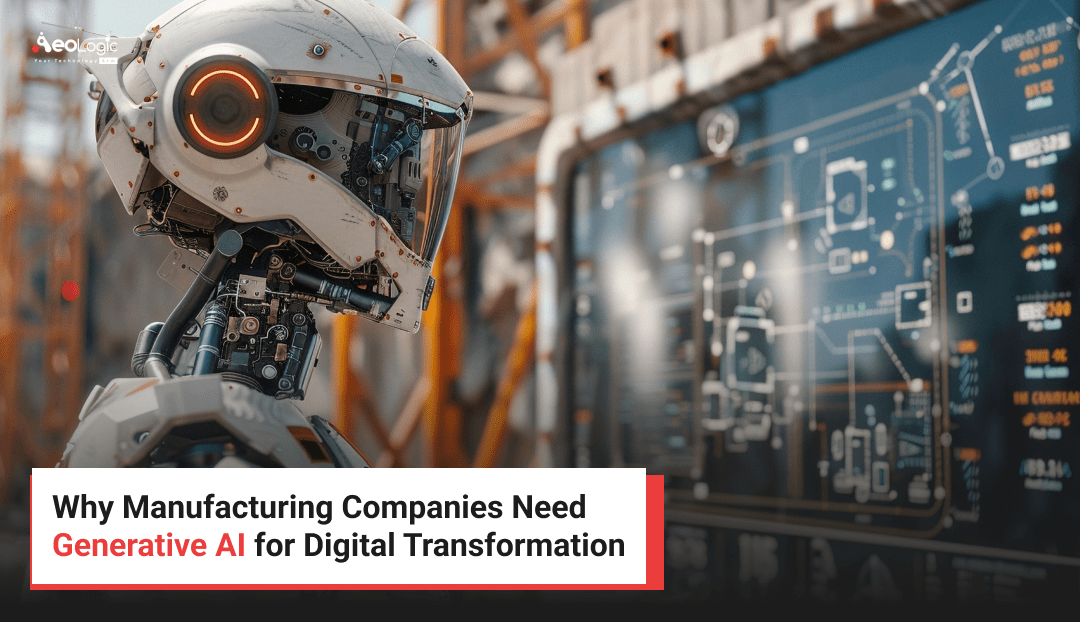The manufacturing industry has always embraced innovation—from the first mechanical loom to industrial automation and the rise of connected factories. Today, a new frontier is reshaping what’s possible: Generative Artificial Intelligence (AI).
While traditional AI has helped optimize existing processes, generative AI goes a step further. It enables manufacturers to create, simulate, and redesign systems and products using data—not just react to it. This makes it an essential tool for any company serious about digital transformation.
In this guide, we’ll break down:
-
What generative AI actually is
-
Why it matters more than ever
-
Real-world use cases in manufacturing
-
Business benefits and challenges
-
A practical roadmap to implementation
Let’s get into it.
What Is Generative AI?
Generative AI refers to models that can create entirely new outputs based on patterns learned from existing data. Unlike traditional AI, which only classifies, detects, or predicts, generative AI can produce new designs, documents, code, simulations, and even physical component blueprints.
These models include:
-
GANs (Generative Adversarial Networks)
-
VAEs (Variational Autoencoders)
-
Transformer-based models (like GPT)
In manufacturing, generative AI can:
-
Produce 3D product designs
-
Simulate factory workflows
-
Build synthetic training data
-
Generate maintenance schedules
-
Draft safety protocols and user manuals
It’s proactive, creative, and continually learning—making it a critical component of modern manufacturing.
Why Generative AI Is Needed Now
1. Growing Complexity of Products and Supply Chains
Products today are highly customized and pass through global, multi-tiered supply chains. Engineers need to consider:
-
Materials
-
Costs
-
Sustainability
-
Lead times
-
Assembly methods
Generative AI can model thousands of design variations instantly, accounting for all constraints. What once took weeks of iteration can now happen in hours.
2. Underutilized Manufacturing Data
Manufacturers are awash with data—generated from:
-
ERP systems
-
MES (Manufacturing Execution Systems)
-
IoT sensors
-
QC stations
But most of this data remains siloed and unused.
Generative AI can unify structured and unstructured data to reveal patterns, simulate outcomes, and recommend process changes—bridging the gap between raw data and actionable insight.
3. Knowledge Loss and Workforce Shortages
Skilled operators are retiring. New hires often lack decades of institutional knowledge.
With generative AI:
-
Legacy documentation can be digitized into SOPs
-
Expert systems can simulate operator knowledge
-
AI copilots can guide new technicians in real time
This ensures knowledge is retained—and even scaled.
4. Pressure for Faster Innovation
Time-to-market is critical. Product lifecycles are shrinking.
Generative AI supports rapid innovation by:
-
Allowing designers to auto-generate and test design variations
-
Simulating failure scenarios
-
Offering in-line recommendations to engineers and managers
It drastically reduces the gap between idea and delivery.
5. Demand for Sustainability and Waste Reduction
Environmental regulations and customer expectations are pushing manufacturers to:
-
Use fewer raw materials
-
Minimize energy waste
-
Increase recyclability
Generative AI helps by:
-
Optimizing product designs for material usage
-
Generating eco-friendly component options
-
Predicting inefficiencies in processes
It enables sustainability without compromising performance.
Key Use Cases of Generative AI in Manufacturing
1. Generative Design + Rapid Prototyping
Instead of creating one design at a time, generative AI produces hundreds or thousands of design iterations based on target goals like weight, strength, or cost.
For example:
-
General Motors used Autodesk’s generative design to create a new seatbelt bracket.
The result? A part that was 40% lighter and 20% stronger.
Design teams can evaluate diverse options in minutes and send the best one straight to 3D printers or CNC machines.
2. Predictive Maintenance & Equipment Simulation
Generative AI enhances predictive maintenance by:
-
Simulating mechanical stress and wear over time
-
Detecting likely points of failure in advance
-
Recommending prescriptive maintenance actions
Example:
Siemens uses generative AI to optimize turbine maintenance, saving millions in unplanned downtime.
3. Human-Machine Collaboration
AI copilots help floor workers by:
-
Understanding verbal commands
-
Providing contextual help (manuals, steps, SOPs)
-
Logging incidents or changes in workflow
Bosch has built voice-enabled AI assistants that let operators control machines using plain language.
4. Synthetic Data for Quality Control
Training machine vision systems usually requires thousands of defect samples. Generative AI creates synthetic images of product defects, allowing models to learn faster and more accurately.
This improves inspection speed and reduces reliance on large datasets.
5. Resilient Supply Chains
Post-COVID disruptions showed how fragile supply chains can be. Generative AI helps by:
-
Simulating alternate sourcing plans
-
Recommending new suppliers
-
Modeling transport delays and rerouting options
One global electronics firm used generative AI to reroute materials during a chip shortage—cutting delivery delays by 25%.
Business Benefits of Generative AI in Manufacturing
✅ Faster Innovation Cycles
Designs can go from concept to prototype in hours instead of weeks.
✅ Reduced Operating Costs
Fewer breakdowns, less waste, and optimized resource usage.
✅ Improved Product Quality
AI simulations stress-test products before production starts.
✅ Greater Flexibility
Respond to changing customer demand without retooling everything.
✅ More Empowered Workforce
AI assists, augments, and scales human decision-making.
✅ Sustainability by Design
Generate low-waste alternatives and energy-efficient layouts.
Barriers to Adoption (and How to Overcome Them)
1. Data Readiness
Generative AI needs clean, centralized, and accessible data.
🛠️ Fix:
Implement a data lake strategy, unify cloud and on-prem storage, and use edge computing where needed.
2. Talent Gap
You need hybrid knowledge: people who understand both manufacturing operations and AI tools.
🛠️ Fix:
Upskill internal teams, partner with universities, or bring in consultants for early-stage implementation.
3. Integration with Legacy Systems
Old machinery and software often can’t “talk” to modern AI platforms.
🛠️ Fix:
Start with modular pilots. Use gateways or middleware that connect old equipment to modern cloud tools.
4. Resistance to Change
Teams may fear job loss or struggle to trust AI suggestions.
🛠️ Fix:
Frame AI as an assistant, not a replacement. Train operators to use AI as a co-pilot. Show wins early.
Getting Started: Practical Roadmap
-
Identify High-ROI Use Cases
Focus on areas with data abundance and high inefficiency: e.g., design, maintenance, inventory. -
Run a Controlled Pilot
Choose one process or department. Measure baseline metrics before and after. -
Strengthen Your Data Strategy
Clean your data, remove silos, and invest in centralized dashboards. -
Build Strategic Partnerships
Collaborate with AI vendors, research labs, and system integrators familiar with industrial use. -
Train the Workforce
Create blended learning programs that teach frontline workers how to use AI tools. -
Scale Gradually
After your pilot succeeds, expand to multiple lines or factories—focusing on repeatable wins.
Conclusion: The Future Is Generative
Generative AI is more than a buzzword. It’s the next frontier in making factories:
-
More adaptive
-
More intelligent
-
And more profitable
Companies that act now will lead tomorrow. They’ll be the ones designing faster, producing smarter, and solving problems before they happen.
Digital transformation is no longer just about connecting machines—it’s about reimagining how things are designed, built, and delivered.
Those who delay risk falling behind in an industry that’s accelerating faster than ever.

Passionate about breaking down complex tech into simple ideas. Covers everything from AI and software development to gadgets and emerging tech trends.






